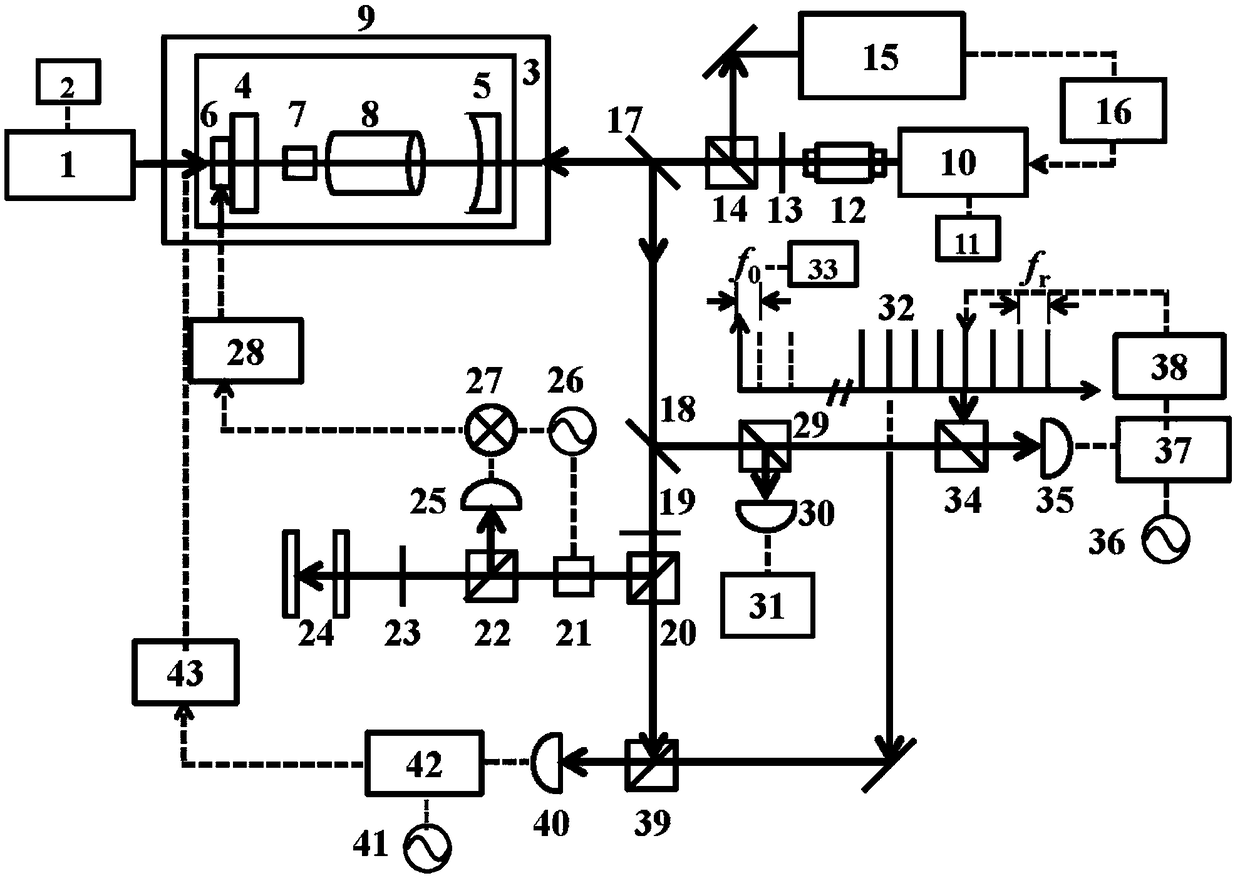Dual-wavelength good-and-bad-cavity active optical clock based on secondary cavity locking technology, and implementation method thereof
A dual-wavelength, active light technology, applied in lasers, laser parts, instruments using atomic clocks, etc., can solve the problems of the use of optical frequency standards, the failure to give full play to the advantages of active optical clocks, and the inability to further narrow the output laser line width.
- Summary
- Abstract
- Description
- Claims
- Application Information
AI Technical Summary
Problems solved by technology
Method used
Image
Examples
Embodiment 1
[0041] Such as figure 1 As shown, the dual-wavelength good-and-bad-cavity active optical clock based on the secondary cavity-locking technology of this embodiment and its implementation method include: a first laser 1, a first laser power supply 2, an integrated Invar resonant cavity body 3, four Point-coated main resonant cavity mirror-plane mirror 4 and plano-concave mirror 5, piezoelectric ceramic sheet 6, good cavity laser gain medium 7, alkali metal atomic gas cell 8, magnetic shielding box 9, second laser 10, second laser Power supply 11, isolator 12, first half-wave plate 13, first polarization beam splitter prism 14, modulation transfer spectrum frequency stabilization module 15, first servo feedback circuit 16, first dichroic mirror 17, second dichroic mirror 18, second Half wave plate 19, second polarization beam splitter 20, phase modulator 21, third polarization beam splitter 22, quarter wave plate 23, high-precision Fabry-Perot reference cavity 24, first photodete...
Embodiment 2
[0049] Such as figure 2 As shown, the dual-wavelength good-and-bad-cavity active optical clock and its implementation method based on the secondary lock cavity technology of the present invention include: all optical elements and instruments used in Embodiment 1, ultra-stable femtosecond optical frequency comb 32, microwave atomic clock 33. The fifth polarization beam splitter prism 34, the third photodetector 35, the second signal generator 36, the first phase-locked loop 37, the third servo feedback circuit 38, the sixth polarization beam splitter prism 39, the fourth photodetector 40 , a third signal generator 41 , a second phase-locked loop 42 , and a fourth servo feedback circuit 43 .
[0050] 1) The wavelength range of the optical comb should cover 1000-1500nm, where the zero frequency f ceo The signal is locked on the frequency reference provided by the microwave atomic clock: 1f-2f interference (self-referencing technique) is used to extract the zero frequency f of t...
PUM
 Login to View More
Login to View More Abstract
Description
Claims
Application Information
 Login to View More
Login to View More - R&D
- Intellectual Property
- Life Sciences
- Materials
- Tech Scout
- Unparalleled Data Quality
- Higher Quality Content
- 60% Fewer Hallucinations
Browse by: Latest US Patents, China's latest patents, Technical Efficacy Thesaurus, Application Domain, Technology Topic, Popular Technical Reports.
© 2025 PatSnap. All rights reserved.Legal|Privacy policy|Modern Slavery Act Transparency Statement|Sitemap|About US| Contact US: help@patsnap.com


